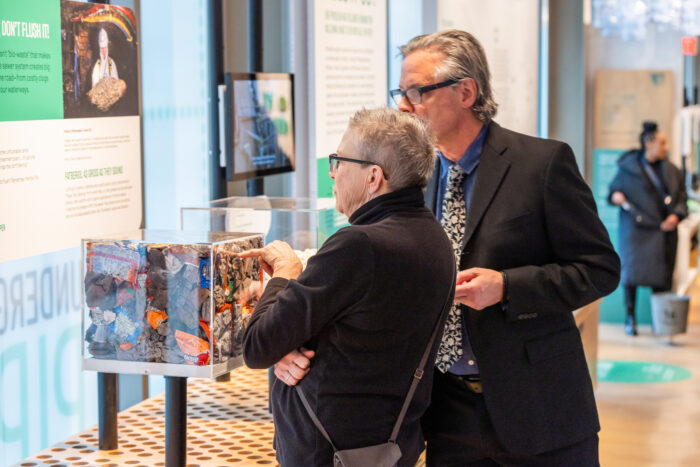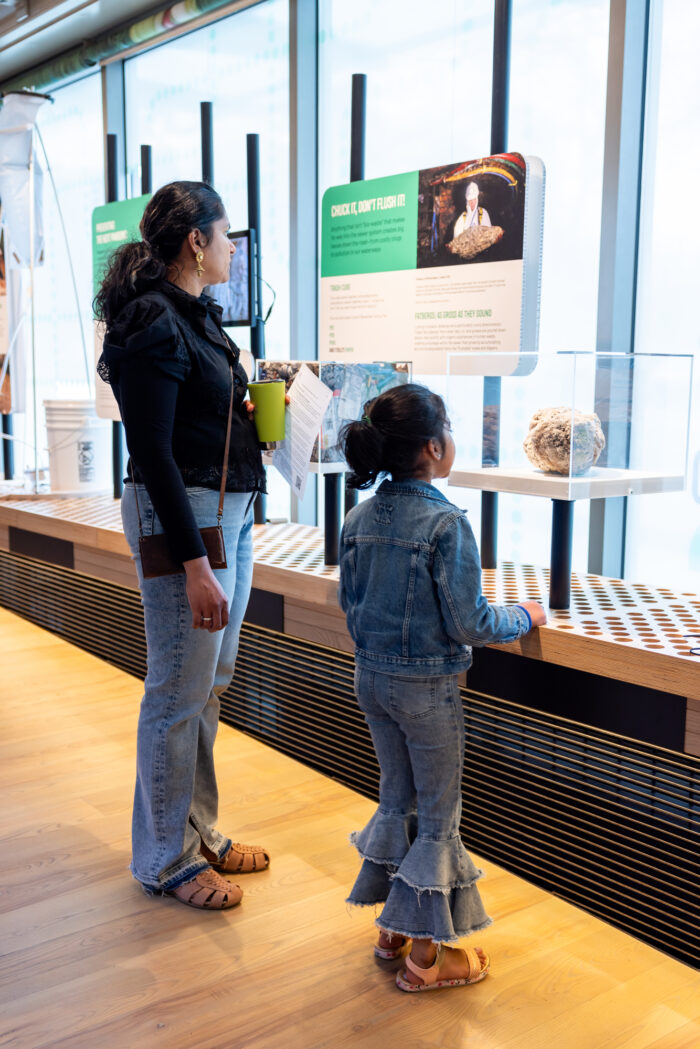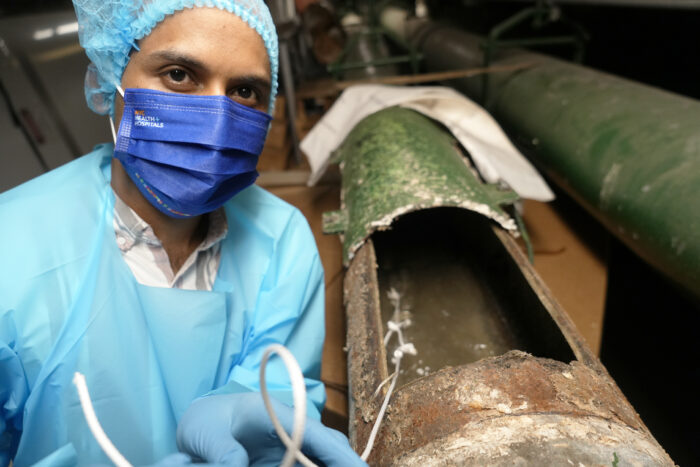Where it goes
Where Does it Go?
One problem has followed humans for millennia: what to do with all the poo? Today, sanitation technologies boil down to two systems: sewered and non-sewered.
See the challenges and solutions with non-sewered sanitation
See how a wastewater treatment facility works
What is safe to flush?
Anything that isn’t “bio-waste” that makes its way into the sewer system creates big issues down the road–from costly clogs to pollution in our waterways.
What is safe to flush? Remember the four Ps:
- pee
- poo
- puke
- paper (toilet paper to be more clear)


Fatbergs
Lurking in sewers, fatbergs are a particularly costly phenomenon. These “fat icebergs” form when fats, oil, and grease are poured down drains then solidify with organic substances in human waste, creating a blockage within the sewer that grows by accumulating any non-biodegradable items like “flushable” wipes and diapers.
Preventing the next pandemic
Sewage can reveal a lot about the health of our communities. By collecting and testing waste–from treatment plants, sewage canals, even airport lavatories–epidemiologists can track viruses, bacteria, and disease, sometimes even before a case is reported.
